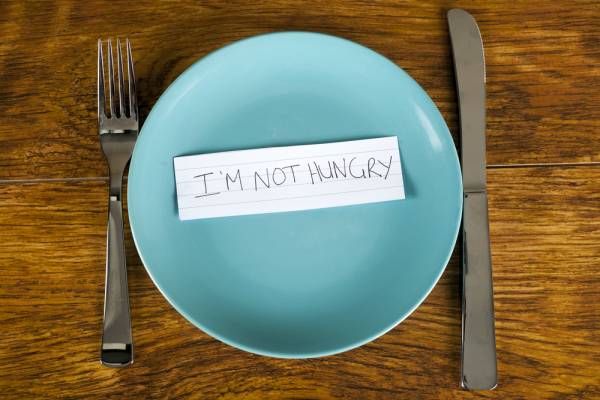Eschewing the normal three, four, or five meals-per-day routine and fasting for many hours has become popular.
I know what you’re thinking. Who would even attempt this when most of you are seeking to get stronger, fuel workouts, and recover from demanding training sessions? Skipping timely food intake cannot be a good thing when your in-flux body needs nutrients on a consistent basis.
I completely agree, but let’s take a look at the justification for irregular meal consumption. Here are the purported benefits of intermittent fasting for athletes/trainees and the rationale behind them.
The Potential Benefits of Intermittent Fasting
Benefit #1: Decreases body fat. Enhances lean muscle preservation.
Rationale: In the fasting state, fat is the preferred fuel. A twelve- to 24-hour fast decreases blood and liver glycogen. This triggers the use of free fatty acids, non-liver glucose, and fats obtained from ketone bodies as energy. This makes sense energy-wise, but to preserve muscle tissue, some type of resistance training must still be performed. Agree?
RELATED: How to Make the Fasted State Work for You
Benefit #2: Removes toxins from the body.
Rationale: Many believe unwanted toxins can be flushed out of the body through fasting. This will leave you pure and more energetic. I’m not so sure about the science behind this.
Helps to manage eating behavior.
Rationale: You’re hungry, so you eat. You’re bored or stressed out, so you eat. These internal and external cues cause you to consume food instinctively. Intermittent fasting can challenge you to abstain from eating when you typically would in the previous situations.

Now assuming you believe in these benefits, you next have to choose which method of intermittent fasting you wish to pursue. Here’s a quick rundown of some of the most popular approaches.
LeanGains
Started by Martin Berkhan, the Lean Gains’ 24-hour approach to fasting goes as follows:
- A sixteen-hour fast from late evening until the following afternoon. In the remaining eight hours of the day, you consume three meals spread out over the eight hours.
- On workout days, consume a meal that consists of carbohydrates and protein to prevent muscle loss.
- On rest days, emphasize meals composed of fat and carbohydrates.
RELATED: Build Lean Muscle Mass With Intermittent Fasting
Eat Stop Eat
Created by Brad Pilon, the Eat Stop Eat approach entails a 24-hour fast performed once every two to three weeks. This method seems reasonable because it doesn’t restrict essential nutrient intake over the long-term. It is also recommended to incorporate strength training during this period.
The Alternate-Day Diet
A twelve-hour feeding followed by a 36-hour fast. Dr. James Johnson explained this diet in his 2009 book, The Alternate-Day Diet. This plan involves sensible food intake for twelve hours, then a 36-hour period (a day and a half) of no food intake. This approach takes extreme discipline to endure.
“[N]umerous studies show that exercising when fasting actually burns muscle as fuel.”
Meal Elimination
Simply eliminate one or two meals per week while eating a normal diet. Healthy choices are encouraged – good fats, complex carbohydrates (plant-based), and high-fiber foods.
RELATED: Sane and Simple Nutrition
The Warrior Diet
This mode of intermittent fasting defies conventional wisdom. The Warrior Diet entails only one meal per day, consumed prior to an exercise session or in the evening. It’s based on the logic that our ancestors often ate once per day to survive.
The Downside of Intermittent Fasting
- There has been little research into the effectiveness of intermittent fasting on enhancing athletic performance, fat loss, and concomitant muscle tissue increase. In fact, numerous studies show that exercising when fasting actually burns muscle as fuel.
- Regarding the removal of toxins from the body, the main detoxification organs (intestines and liver) need energy to fulfill their jobs. To transform toxins to waste for elimination, fiber and calories are required, thus consuming those items is important.
- When it comes to hunger behavior modification, ignoring hunger can lead to binge eating. This can become counterproductive if too many calories are consumed at the next feeding.
- Injured athletes need nutrients to allow for healing. Fasting means important nutrients are not ingested, which can delay the healing process.
- Finally, exercise itself enhances insulin sensitivity and the body’s ability to use fat as fuel. If your goal is to grow muscle and lose fat, you can accomplish this by simply exercising and adhering to appropriate calorie intake.
READ MORE: Intermittent Fasting For Athletes
While it may be a popular tool, intermittent fasting is not necessary if you’re following sensible training and diet plans.
Have you tried fasting? What approach did you use and how did it work for you? Please post your experiences and thoughts to the comments below.
1. Morin, Kate. “Five Intermittent Fasting Methods: Which One is Right for You?,” Daily Burn, May 9, 2014.
2. Van Winkle, Monica. “Scheduled Interruption,” Training and Conditioning 24, (2014): 9, 19-24.
Photo 1 courtesy of CrossFit Empirical.
Photo 2 courtesy of Shutterstock.






